GUEST POST: Photographer Susan Alexander reflects on how ‘DNA is more than just science’
The photographer Sue Alexander’s multiracial family history features in our 2022 exhibition By The Cut of Their Cloth. So she was delighted to be invited to capture the in-person meetings of another project from The Mixed Museum: Reclaiming History Through Science, which explores the role of DNA testing in the lives of Britain’s ‘brown babies’. In this guest blogpost, she describes what being part of the project meant to her, the connection she feels with members of the group – and why her own DNA journey has been fundamental to her own sense of belonging.
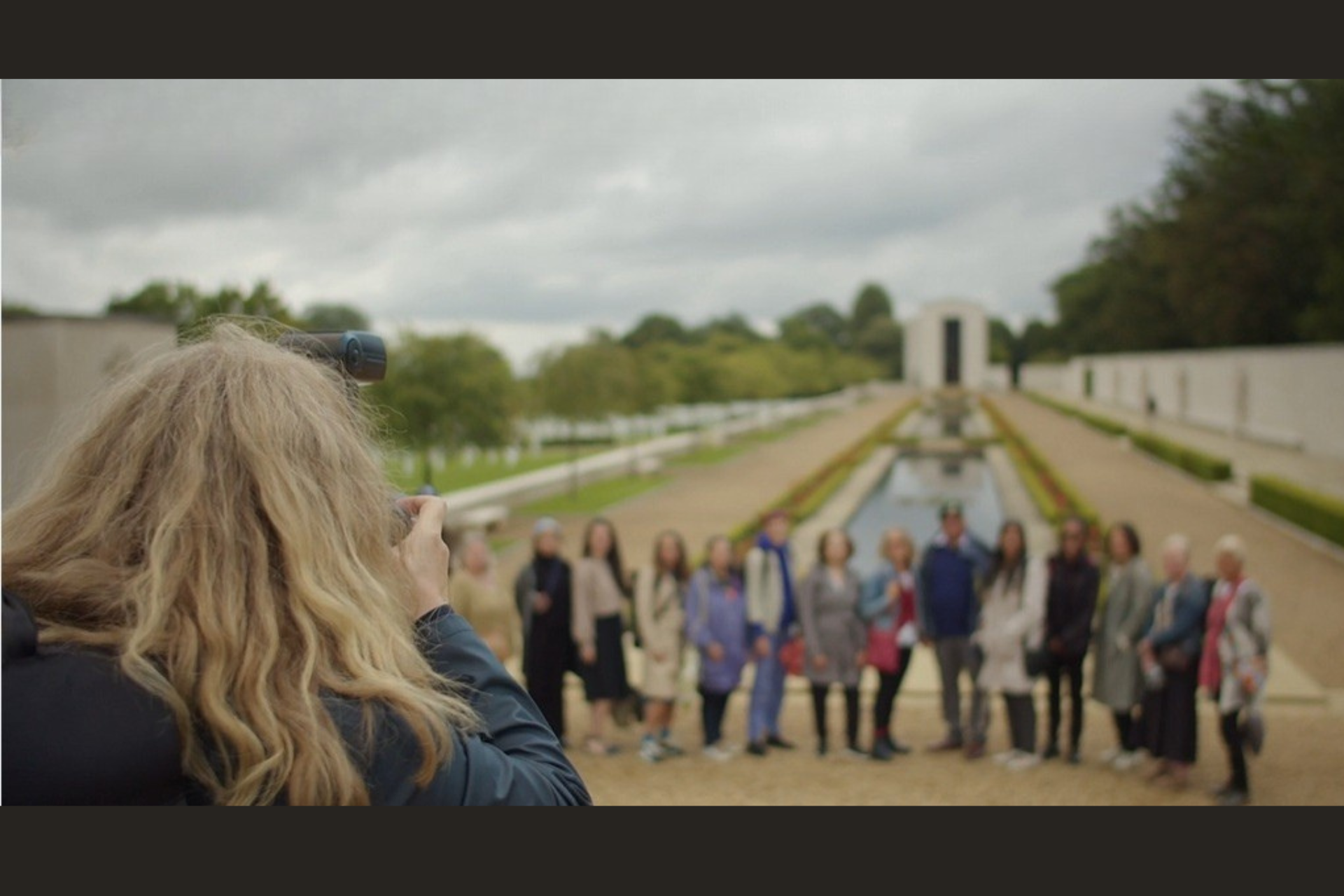
Photographing WW2 'brown babies' families
I was delighted to be asked by The Mixed Museum's Director, Dr Chamion Caballero, to photograph the first in-person meet-up of members of the group of ‘brown babies’ families taking part in TMM’s Reclaiming History Through Science project.
Although the gathering at Friends House in Euston, London was the group’s first time meeting in person, you could instantly feel the sense of connection. It was an evocative occasion, with deep, highly sensitive topics on the table for discussion. Yet, alongside the intensity, there was a nuanced level of understanding, acceptance, and validation. On top of that, there was the excitement and pure joy of being able to talk about these topics – topics that had, for many, previously been brushed under the carpet.

Members of the group and project team at Friends House in Euston, June 2024. Image: Susan Alexander Photography for The Mixed Museum
I was quickly brought up to date with the poignant history of Britain’s ‘brown babies’. I learned that these children had been conceived during World War II between Black American GIs and white British women, at a time when America’s segregation policies were still very much in force. The Black American GIs were not allowed to marry these women, and it was decided that it would be ‘best for all involved’ if many of these children were taken into care. Not all the babies were separated from their parents – some mothers kept the children conceived out of wedlock, raising them within their white British families but cut off from their Black American fathers.

Some of the children born to Black GIs and white British women - dubbed the 'brown babies' by the African American press - who lived in children's nursery Holnicote House in Somerset.
The personal stories were fascinating. I was completely engaged – to the point where I had to remind myself I was there to work! I kept getting so drawn in. A few members of the group, like me, were pale-skinned but of mixed heritage. We are all familiar with the mixed identity experience of having to repeatedly answer the question, ‘Where are you from’, but this was the first time I had heard others openly discuss their experiences of having a background that isn’t visibly obvious. I deeply identified with their need to explain and break down their heritage, their search for validation – the internal battle between feeling like a fraud yet longing for the recognition of both sides of your ancestry. It’s the constant balancing act of how others perceive you versus how you feel in your soul.
Whilst I felt I could identify with the group, there was one massive difference and I quickly realised how fortunate and privileged I was to have been bought up by both of my parents, whilst some of the families of the ‘brown babies’ were still trying to investigate and make connections or had already been through long and tough journeys of discovery.
From 1960s sweethearts to 58 years of marriage
The historical timing of these incidents paralleled that of my parents, who were both born in 1945, shortly after World War II had ended. My dad was born in East London, South Africa. My mum was born in Dublin, Ireland. As part of post-war migration in the early 1960s, when they were both in their teens, they left their native countries to start new lives in England’s capital, London. They met in a bar in Chinatown, where my dad was a drummer in a band. They fell in love and decided to get married.
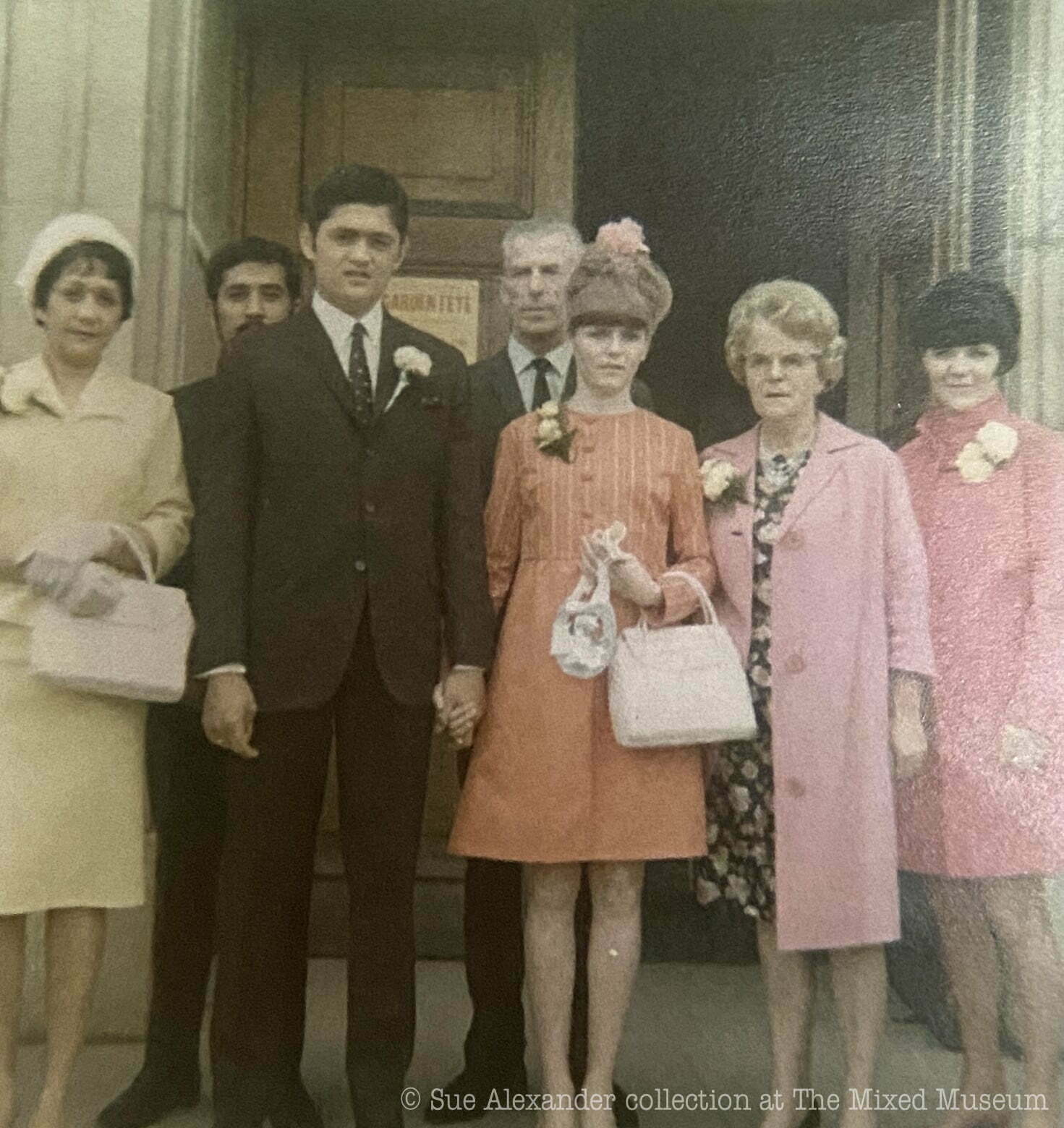
My parents' wedding at St Joseph's Church, Wembley, June 1967.
At the time, my mum’s parents were still living in Ireland. When they heard about the relationship, they were intent on coming over to England to stop the romance. In the words of my mum’s dad, my grandad, they didn’t want my mum to have anything to do with ‘the black stud’. This is a story my parents would often tell us, one of the only times they spoke about the racism they faced. My mum’s family insisted their cultures were too different, that it would never work. Yet, this year, my parents will celebrate 58 years of marriage!
I have an older brother and a younger sister and, growing up in the 1970s we had a happy childhood. I didn’t realise it was considered so unusual to have parents of different races until I started school.
That was my introduction to people’s prejudice and the persistent questioning of my family dynamics. I was regularly asked, and sometimes even told, that my dad couldn’t be my dad – that I must be mistaken, that he must be my stepdad, that I should ask to see my birth certificate. And this wasn’t just from children – it was from adults too. On more than one occasion, at school pick-up, if my dad came to collect me, the teachers would ask, “Who is that man?” or “How do you know him?”. My dad would never take offence at this line of questioning – he would always laugh it off.
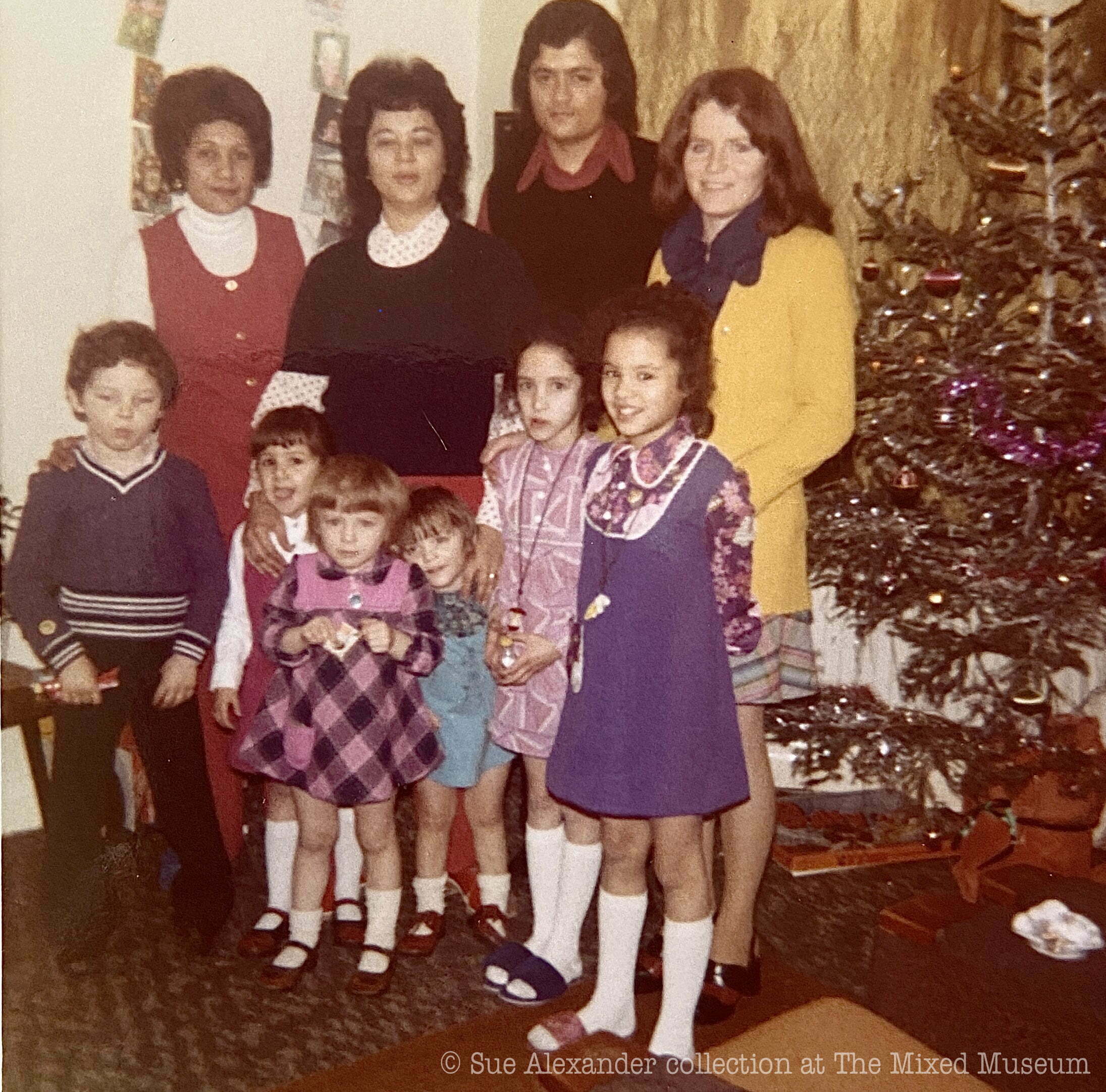
Back row: Granny Connie, Auntie Cynthia, Dad, Mum. Front row: my brother Paul, cousin Ronda, me, my sister Jill, cousin Debbie, cousin Michele.
My dad is Cape Coloured, and his experiences growing up in Apartheid South Africa have profoundly shaped our family’s narrative. Under Apartheid, the government enforced a rigid racial classification system, categorising individuals into four primary groups: Native (Black Africans), Coloured (mixed-race individuals), Asian (primarily Indian and other Asian communities), and White. This classification dictated every aspect of life – where people lived, their education, employment opportunities, and even whom they could marry.
The term Coloured in South Africa refers to a distinct ethnic group with a rich cultural heritage. This identity dates back to the 17th century, primarily in the Western Cape, when European settlers (mainly Dutch) mixed with the indigenous Khoisan peoples, enslaved Africans, and indentured labourers from Asia. This resulted in a unique culture, with its own dialects, such as Afrikaans and Afrikaaps, and deeply rooted traditions. Unlike in the UK or the USA, where coloured is considered an offensive term, in South Africa, this community have reclaimed it as a proud identifier of their heritage.
Apartheid’s strategy of divide and rule was designed to maintain white supremacy by fostering divisions between non-white populations. By granting varying degrees of privilege to different racial groups, the regime aimed to prevent a unified resistance. For instance, while Coloureds had access to slightly better education than Black Africans, they were still denied fundamental rights such as voting and faced severe restrictions in employment and movement. This hierarchical structuring created tension between communities, ensuring that the white minority retained control.
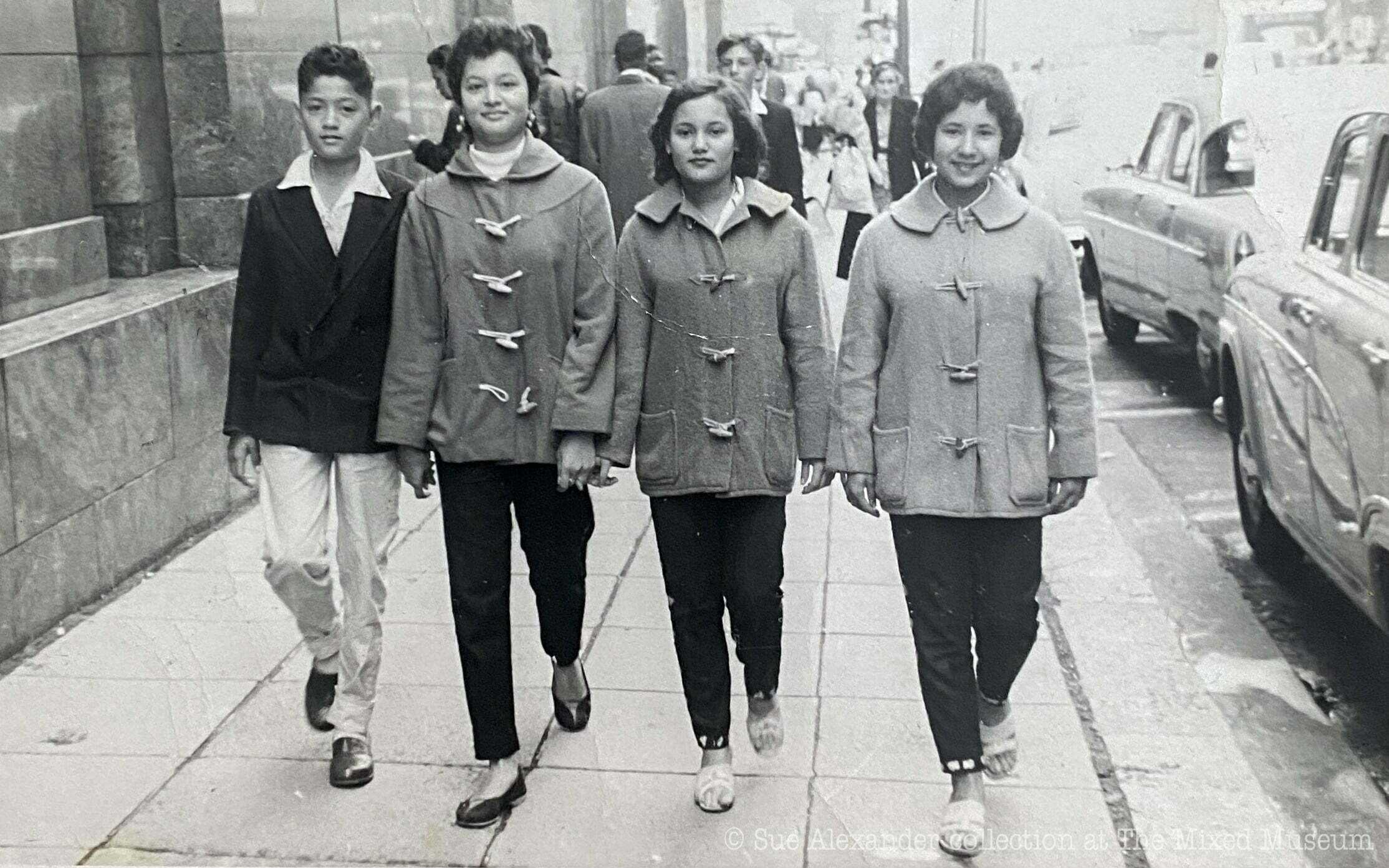
My dad, Auntie Cynthia, her friend Val and Val's sister in Cape Town. Val came to England too.
The power of DNA and identity
The Mixed Museum’s Reclaiming History Through Science project was created to investigate how the science of DNA testing could assist ‘brown babies’ families in their search for long-lost relatives. As part of my own personal journey, I too tried DNA testing. I was initially very surprised to learn that 20% of my DNA originates from Southern China. I had always known that my dad’s father was half Chinese, but I had assumed I would have had a higher percentage from South Africa.
However, once I researched the origins of Cape Coloureds further, I realised that my DNA, which consists of 15 different ancestral regions, aligns perfectly with this group. My top five regions are Ireland, Southern China, Germanic Europe, Bengal and the Khoisan, Aka and Mbuti peoples. Given that my mum’s family tree is almost entirely Irish, this mix makes complete sense.
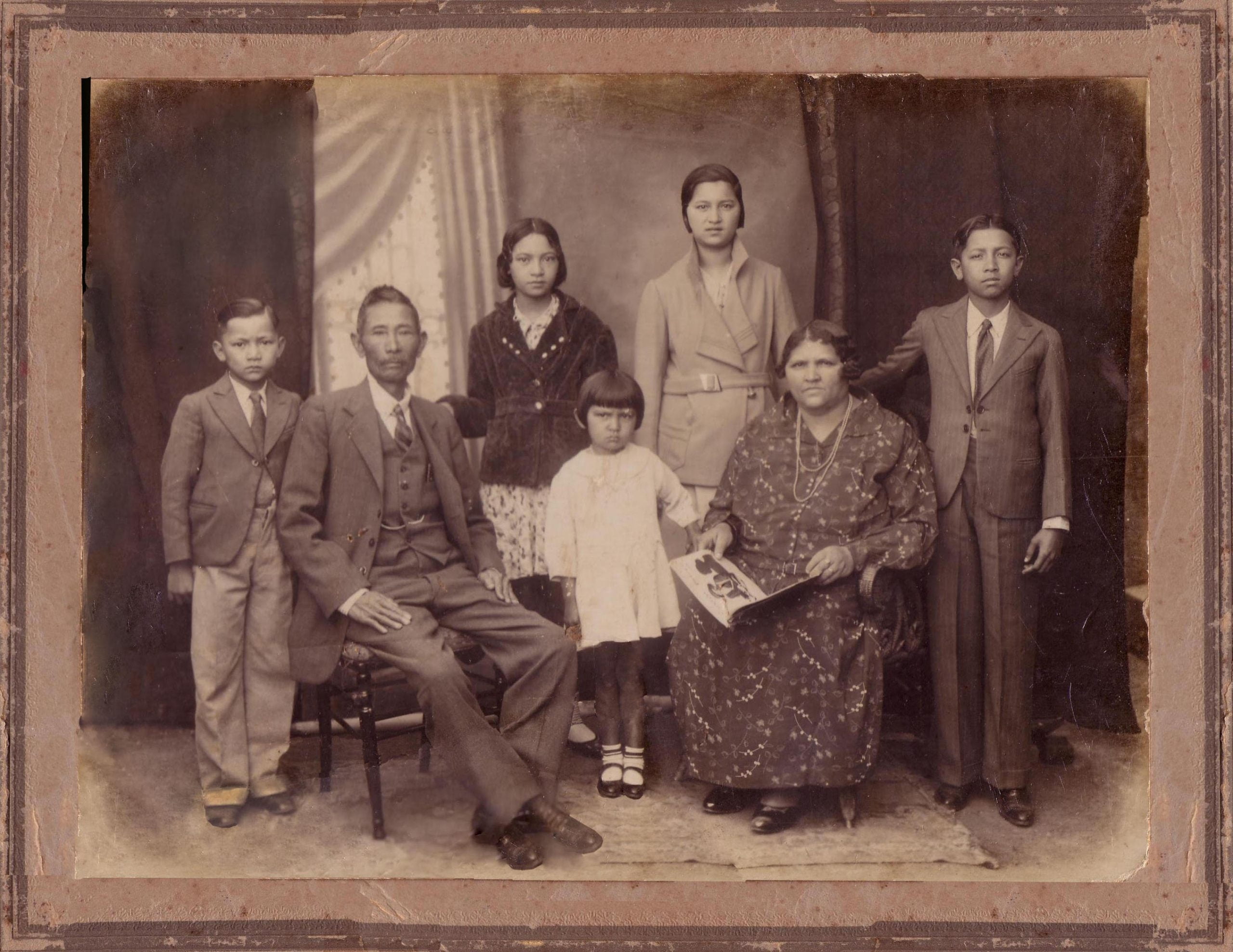
This family portrait would have been taken around the 1930s, in East London, a city on the southeast coast of South Africa. My grandad – my father’s father - is the younger boy in the picture, his name was Singling Ahwhy. It is understood that my great-grandad came from Taiwan.
In fact, while writing this piece and revisiting the Ancestry DNA site – which is constantly evolving – I discovered that they have now linked my DNA to Cape Coloureds in their Ancestral Journeys section. They have even created a timeline detailing the migration of Asians to South Africa between 1700 and 1975, further detailing the historical context of these connections within my heritage.
DNA, for me, is more than just science – it’s a certification of proof, an undeniable link to my heritage. I was very close to my Granny Brown. As a child, I thought her name Brown was because of her skin colour; it was only later that I realised she had taken the name when she remarried Mr. Brown. When she passed away seven years ago, I was heartbroken. My dad is now 80, and when he is gone, I will feel like I have lost access to that part of me. But now, I have my DNA. If in the future anyone questions or doubts my heritage, I have something tangible to authenticate my identity.
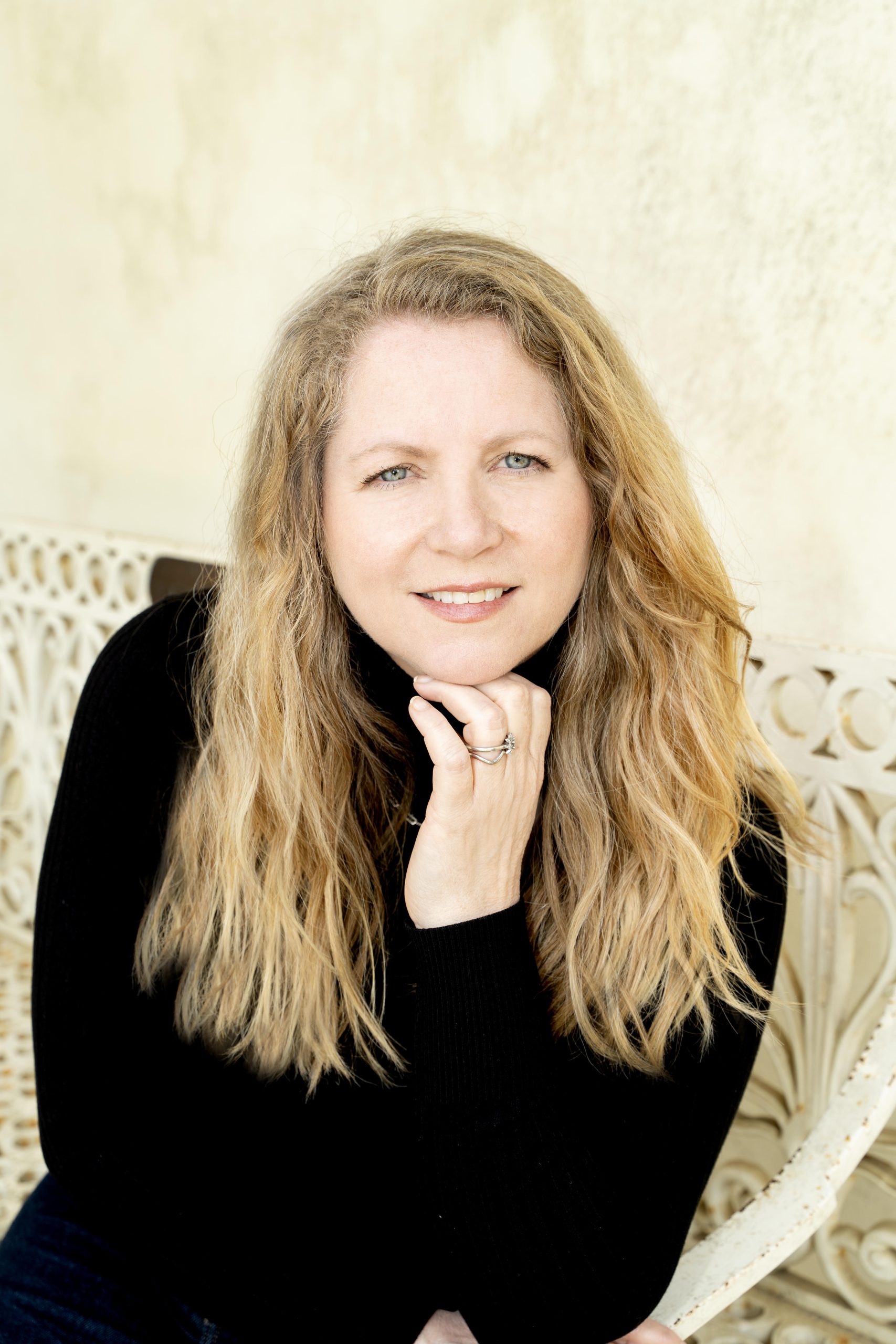
Susan Alexander is a professional photographer with over 25 years of experience in the industry. She started as a photographers’ assistant in advertising and fashion in London in the 1990s and now freelances, specialising in portrait, event and documentary photography. Susan has a BA in Communications from London Guildhall University and has had two exhibitions of her work at Watford Museum featuring her projects My British Family and Covid's Keyworkers. Recently, her exhibition Voice Through a Lens was held at St Albans Cathedral in collaboration with MacIntyre Charity. Truth and equality are recurrent themes in her work.
Learn more
Visit TMM's digital exhibition By The Cut of Their Cloth for more about Sue’s family story
Read more about the Reclaiming History Through Science project
Watch interviews with members of the ‘brown babies’ group on our YouTube channel
Find out how our first Scientist-in-Residence, Dr Sophie Kay, is helping TMM's audience learn more about the science behind DNA testing
